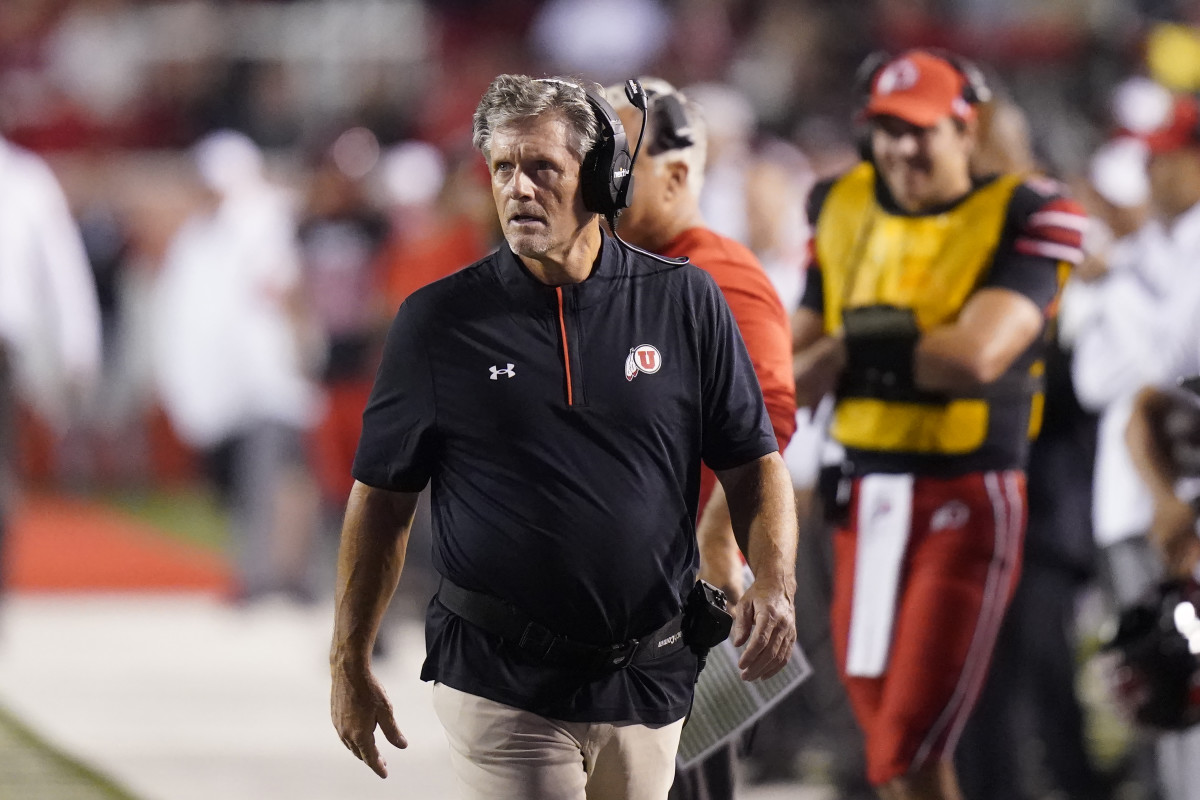Forde-Yard Dash: What Happens When Collectives Come for Your Players
Forty names, games, teams and minutiae making news in college football (third-down defense learner’s manual sold separately in Gainesville):
MORE DASH: Saturday to Remember | Playoff Reset | Year 2 Test
Third Quarter
When the Rival Collective Comes to Tamper With Your Players
Not long ago, Utah athletic director Mark Harlan (21) picked up his phone and called a fellow AD to inform him of something that had transpired: a collective tied to the other AD’s school had tampered with one of the Utes’ football players.
“We had a player who was offered, I believe, about a million dollars to pull him over to another team,” Harlan told Sports Illustrated. “I called that AD and had a discussion, right? And he’s frustrated. Everybody’s frustrated.
“Because this was a friend, it was a friendly call. It was just to say, ‘Listen, it happened.’ My colleague was—embarrassed is not the right word, but he was frustrated.”
The player chose to stay at Utah. But in the current recruiting landscape, where collectives can insert themselves into recruiting by making unilateral money offers to players at other schools with little or no repercussions, this is a problematic part of roster management.
Harlan stressed he is very much in favor of athletes having opportunities to make money off Name, Image and Likeness opportunities, but losing players in recruiting because they are being bought up front is the hard part, for him and his football coach, Kyle Whittingham (22).
“I believe so much in it, I believe it’s the right thing,” Harlan said. “But it’s difficult to not have an enforcement mechanism when we’re running into someone who is clearly utilizing it, in some form or fashion, as inducement. And we’re not. That’s frustrating.”

Whittingham talked about the NIL/collective reality last week as well with local media.
“There’s going to come a time in the very, very near future where the Top 25 NIL pots of money are going to mirror exactly the Top 25 teams in the country,” he said last Monday. “That’s just how it is. That’s where it’s heading and there’s no debate about it, unless they change the rules. I don’t think they can backpedal now with the can of worms that they’ve opened.”
Whittingham, according to Harlan, is “wondering if the dynamic of outworking people [in recruiting] is going to go away.”
This was a topic last week, in part, because the Utes were hosting USC, where Lincoln Riley (23) has radically reshaped the program. A big part of that was working the transfer portal—star quarterback Caleb Williams (24) from Oklahoma and receiver Jordan Addison (25) from Pittsburgh were among the 26 transfers to the Trojans. Williams and Addison also reportedly have NIL deals near or exceeding $1 million.
No one at Utah is accusing USC of doing anything improper in the transfer market or elsewhere. (Pittsburgh coach Pat Narduzzi (26) may see it differently.) But given the different approaches to NIL at the two schools—not to mention USC’s upcoming move to the Big Ten that broke during the summer—the Utes’ 43-42 victory Saturday was made all the sweeter.
Still, the new reality of college athletics could be the kind of thing that pushes some coaches out of football, as it has in basketball (Jay Wright, Mike Krzyzewski and Roy Williams are among the recent retirees). Whittingham is 62 years old and in his 18th season as coach of the Utes.
Another Pac-12 coach whose program is not exactly built for the transfer portal and NIL: David Shaw (27) at Stanford. The academic rigors there can lead to far more players transferring out than in, and there isn’t a large and mobilized booster network ready to dive into player compensation. Shaw’s record the past three-and-a-half seasons is 13–23. That’s after an incredibly successful first eight years at his alma mater.
In clamoring for “guardrails,” college administrators have looked at two potential sources of salvation: Congress (28) and the NCAA (29). Confidence in both entities is low. Congress may or may not be more inclined to hammer out legislation after the midterm elections next month. The NCAA says it is on the case, but it’s difficult to know how much headway is being made—vice president of enforcement Jon Duncan (30) recently put out a request for schools to turn in known cheaters.
For now, the best deterrent might simply be doing what Harlan did when he got wind of another school’s collective trying to buy a Utah player—pick up the phone and tell the other AD to get his collective to stand down.
“I’m tired of complaining,” he said. “I’d like to fix it, and I still believe the best solution is us fixing it. There are some great collectives, and there are some collectives that are problematic.
“You’ve got to make calls like that to try to fix it along the way.”
MORE DASH: Saturday to Remember | Playoff Reset | Year 2 Test
